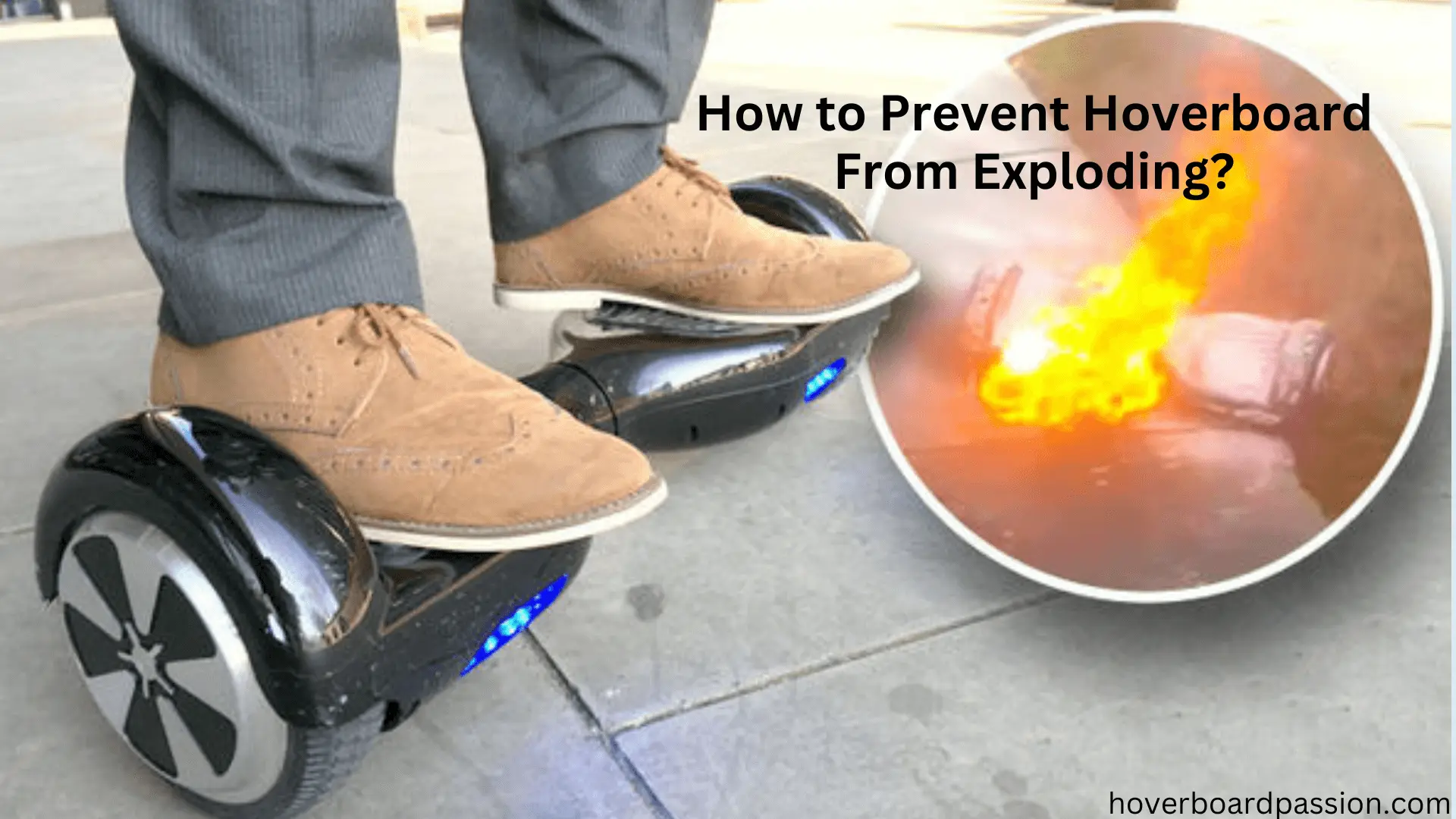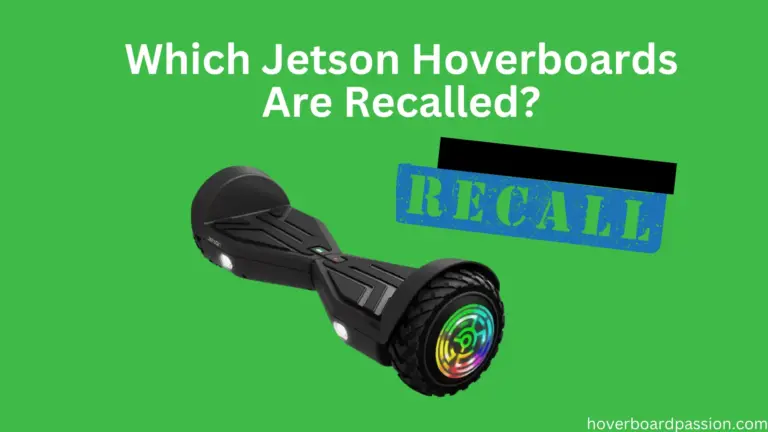How to Prevent Hoverboard From Exploding?
Hoverboards, the beloved transport and plaything of many young people today, are powered by Lithium-ion batteries, which are both fragile and potent. While these batteries are the ideal choice for hoverboards, they can pose risks, particularly under extreme conditions. It’s vital to know how to prevent hoverboard from exploding.
Experts in the field have devised various strategies to mitigate these risks, yet the possibility of hoverboards exploding remains a concern. Therefore, it’s crucial to understand how to protect your hoverboard from fire hazards effectively.
One key indicator of safety is the UI 2272 certification, which ensures the quality of the battery and the overall board, confirming that it meets the necessary standards. Before purchasing a hoverboard, always verify its UI 2272 certification and remain vigilant for any recalls on models that may pose risks.
Navigating the market for hoverboards can be daunting, especially for beginners unsure of which model to choose or how to maintain it properly. In this article, we’ll explore why hoverboards might explode, offer guidance on selecting a safe option, and provide tips for maintaining these self-balancing scooters to ensure both enjoyment and safety.
Why are Hoverboards Exploding?
Hoverboards can explode due to various factors, primarily related to their Lithium-ion battery packs. One common cause is overcharging, which can lead to the battery overheating and becoming unstable.
Poor-quality batteries or manufacturing defects can also contribute to the risk of explosions. Additionally, physical damage to the battery or the hoverboard itself, such as punctures or impacts, can cause internal short circuits, resulting in a fire or explosion.
It’s essential to use and charge hoverboards according to the manufacturer’s instructions and to avoid exposing them to extreme temperatures or conditions that could compromise the battery’s integrity. Regular maintenance and careful usage can help reduce the likelihood of hoverboards exploding.
Common Reasons For Hoverboard Explosions
Hoverboard explosions can occur due to several common causes:
- Overcharging: Leaving the hoverboard plugged in for too long can cause the battery to overheat, leading to instability and potentially resulting in an explosion.
- Low-Quality Batteries: Hoverboards with cheap or poorly manufactured Lithium-ion batteries are more prone to malfunctions, increasing the risk of explosions.
- Manufacturing Defects: Faulty construction or assembly errors in the hoverboard or its battery pack can create vulnerabilities that may cause explosions.
- Physical Damage: Impacts or punctures to the hoverboard or its battery can compromise the integrity of the battery cells, potentially leading to short circuits and explosions.
- Excessive Heat or Cold: Extreme temperatures can affect the stability of Lithium-ion batteries, making them more susceptible to malfunction and explosion.
- Overloading: Attempting to carry too much weight on the hoverboard beyond its recommended capacity can strain the battery and increase the risk of overheating and explosion.
To mitigate these risks, it’s crucial to use hoverboards responsibly, follow manufacturer guidelines for charging and usage, and opt for models with quality components and safety certifications. Regular inspection and maintenance can also help identify potential issues before they escalate into safety hazards. You should also know how to reset hover 1 scooter.
How to Prevent Hoverboard From Exploding?
Opt for UL Certified Hoverboards
Ensure your hoverboard carries UL certification, signifying it meets safety standards. Hoverboards lacking this certification may have inferior materials and mass-produced batteries, increasing the risk of malfunctions and fires. Refer to reputable buying guides to make informed decisions.
Verify UI Certification
Check for UI 2272 certification, mandated by the US government following fire incidents involving hoverboards. This certification ensures the safety of two-wheeled self-balancing scooters, assuring quality and compliance with safety regulations. Reliable platforms like Amazon often stock certified hoverboards from reputable manufacturers.
Safeguard Against Water Damage
Protect your hoverboard from water exposure, as moisture infiltration can lead to damage and potential hazards. If water does enter the device, allow it to thoroughly dry for a minimum of 4 hours before attempting to power it on. Avoid using heat sources like hairdryers, as these can exacerbate battery issues and increase the risk of short-circuiting.
Practice Safe Charging Habits
Avoid leaving your hoverboard charging unattended for extended periods, particularly overnight. Faulty switches, plugs, or chargers lacking fuses can cause batteries to overheat, potentially resulting in explosions. Adhere to recommended charging times and promptly disconnect the hoverboard once fully charged to mitigate risks associated with unstable batteries.
Maintain Optimal Operating Conditions
Keep your hoverboard in a cool environment, as excessive heat can strain the battery and increase the likelihood of overheating. Refrain from riding in extreme temperatures, especially during peak sunlight hours when surfaces can become excessively hot. Store your hoverboard in a shaded area when not in use to prevent unnecessary exposure to heat.
Consider Terrain and Surface Conditions
Take into account the terrain and surface conditions when riding your hoverboard to avoid damaging the battery. Rough or uneven surfaces can pose risks to the battery housed beneath the footrest. For off-road adventures, consider investing in all-terrain hoverboards designed to withstand rugged conditions, with reinforced battery compartments for added protection.
By adhering to these safety measures and exercising caution in usage, you can minimize the risk of hoverboard explosions and ensure a safer riding experience.
Conclusion
In conclusion, safeguarding your hoverboard from explosions requires vigilance and responsible usage. By prioritizing safety certifications, practicing proper charging habits, and considering environmental factors during operation, you can significantly reduce the risk of battery malfunctions and potential hazards. Remember to always prioritize safety and follow manufacturer guidelines to enjoy a worry-free hoverboarding experience.






